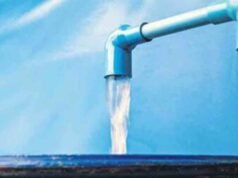India has planned to have permanent platforms in the Indian Ocean to observe profiles of both ocean and atmosphere simultaneously and continuously for long time-series under the ‘Mission Mausam’ and ‘Deep Ocean Mission’, said Ministry of Earth Sciences secretary M. Ravichandran on Tuesday (October 22, 2024).
Already several efforts were made to deploy and maintain observational platforms in the Indian Ocean, and data buoys are the keys to know the interaction between the ocean and atmosphere, especially during cyclones, he told on the inaugural day of the 40th Data Buoy Cooperation Panel (DBCP40) session being held at Indian National Centre for Ocean Information Services (INCOIS) in Hyderabad.
The three day event will have over 150 participants representing 56 countries involved in-situ ocean observation network activities, data management, researchers, buoy manufacturers, and satellite communication providers. They are participating in a hybrid mode.
“INCOIS deals with ocean observation, ocean data management, ocean modelling and forecasting, where all are directly linked with services to society. Thus, it is playing a major role in observing the ocean by maintaining various platforms such as Wave Rider Buoy (WRB), Drifting buoys, tide gauges, Argo floats, Gliders etc.” director T. Srinivasa Kumar.
The Data Buoy Cooperation Panel (DBCP) is a joint initiative of the World Meteorological Organization (WMO) and the Intergovernmental Oceanographic Commission (IOC) of UNESCO. It plays a critical role in coordinating international efforts related to data buoys providing essential data for operational weather prediction model improvements, climate research, and remotely sensed and weather prediction model data validation.
High performing computing facility launched
Earlier, ‘Tarang’, a high performing computing facility was launched by Mr. Ravichandran at the institute. The facility offers one petaflops of compute power with high storage and archival capacity along with enabling machine artificial intelligence and machine learning applications to further boost the oceanographic research and data processing, said a press release.
Published – October 23, 2024 11:35 am IST







